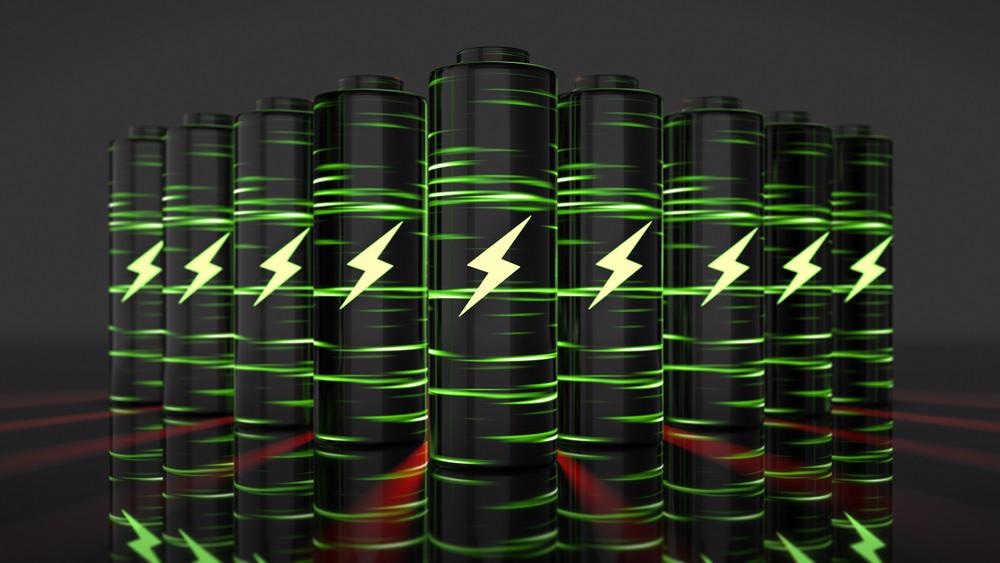A team of researchers recently published a paper in the journal ACS Sustainable Chemistry & Engineering that investigated the feasibility of using proteins to develop catalysts in storage systems with high energy density.

Study: Self-Oxygenated Blood Protein-Embedded Nanotube Catalysts for Longer Cyclable Lithium Oxygen-Breathing Batteries. Image Credit: Immersion Imagery/Shutterstock.com
Limitations of Lithium-Oxygen (Li−O2) Batteries
The rising popularity of mobile, smaller, and lighter electronic devices has increased the demand for energy storage devices with greater energy per weight and volume, such as high-energy storage batteries. Lithium−oxygen (Li−O2) batteries have gained prominence as promising high-energy storage systems owing to their exceptional practical and theoretical energy density compared to the alternative next-generation batteries.
The conventional transition-metal-based cathodes used in the Li-ion cells often lead to unstable supply owing to their large molecular weight. O2 is often used as a cathode material in Li−O2 batteries as it is significantly lighter compared to conventional electrodes and is found in abundance. During the discharging process within the Li-O2 cells, the reaction between the O2 and Li+ ions leads to the formation of lithium oxide products on the oxygen electrode. The reaction is referred to as an oxygen reduction reaction (ORR).
The generated lithium oxide products are then decomposed and retrieved as O2 and Li+ ions for recharging through the oxygen evolution reaction (OER), facilitating the reversible electrochemical operation. However, the partial decomposition of the insulating discharge products typically leads to large overpotentials and unintended decomposition of the O2 electrode. Additionally, the sluggish multielectron transfer reactions for the OER and ORR in Li−O2 cells lead to insufficient reversibility and poor overall efficiency.
To overcome these limitations, catalysts that meet certain requirements must be added to the O2 electrodes of the Li−O2 cells. These requirements include adequate electrochemical reaction surface area for charge transfer and high catalytic stability and activity. Natural materials, including different inorganic and organic components, are typically used to develop several cost-effective catalyst materials for Li−O2 batteries.
For instance, commonly available protein sources with unique functionalities can be utilized as precursors for catalysts owing to their folding ability and long carbon chains. Additionally, proteins are one of the easily accessible and most common compounds that can be sourced from the food industry, nature, and biomass.
Among proteins, hemoglobin (Hb) derived from biowaste can be used as an innovative compound to develop protein-based catalysts for sustainable Li−O2 batteries. Hb can act as an effective O2 transporter and catalytic material for Li−O2 cell reactions owing to the auto-oxygen binding properties and catalytic redox properties of the iron (Fe) centers of hemes.
Fabrication of Protein-based Catalysts
In this study, researchers introduced oxygen-transporting Hb biomaterial into carbon nanotubes (CNTs), and the resultant proteinated CNTs were employed as a biocatalyst for Li−O2 batteries. The Hb was embedded into CNTs through capillary force.
Bovine Hb, 1-methyl-2-pyrrolidinon (NMP), bis-(trifluoromethane) sulfonimide lithium salt (LiTFSI), poly(vinylidene fluoride) (PVDF), diethylene glycol dimethyl ether (DEGDME), deionized (DI) water, and tetraethylene glycol dimethyl ether (TEGDME) were used as the starting materials.
Hb was added to multiwalled carbon nanotubes (MWCNTs) and DI water was used as a solvent. The mixture was then filtered using a vacuum pump and evenly stirred to uniformly mix the components. Eventually, the proteinated CNTs were obtained after drying the solvent for 24 hours at 80o Celsius.
Fabrication of Li-O2 Cells
10 wt % PVDF, 30 wt % pristine CNTs, and 60 wt % proteinated CNTs were dissolved in NMP to fabricate a proteinated CNT cathode. 10 wt % PVDF and 90 wt % pristine CNTs were dissolved in NMP to fabricate a pristine CNT cathode.
The synthesized proteinated CNTs were coated on a nickel (Ni) foam current collector and dried in a vacuum oven for 24 hours at 80 o Celsius. The electrolytes were fabricated by adding LiTFSI to TEGDME and DEGDME and stirring the mixtures for 24 hours. Glass fiber and a Li metal foil were employed as the separator and anode, respectively.
Characterization of the Fabricated Samples
Transmission electron microscopy (TEM), scanning electron microscopy (SEM), energy-dispersive X-ray spectroscopy (EDS), thermogravimetric analysis (TGA), X-ray diffraction (XRD), and Fourier-transform infrared (FTIR) spectrophotometry were performed to characterize the pristine and proteinated CNTs. Full charge-discharge tests, cyclability tests, and cyclic voltammetry (CV) tests were conducted for electrochemical characterization of proteinated CNT electrodes. The researchers also performed in situ differential electrochemical mass spectrometry (DEMS) and ex-situ characterization.
Research Findings
Proteinated CNT samples and electrodes using these samples for Li-O2 cells were fabricated successfully. The capillary pressure was adequate for embedding the Hb protein in the CNT pores, where the Hb nanoparticles remained immobilized in the CNT layers.
The introduction of Hb protein into the proteinated CNTs did not impact the stability of their structures. Both proteinated and pristine CNTs displayed a similar crystallinity and lattice spacing. The Li-O2 cell performance was significantly improved due to the use of proteinated CNT catalysts, and additional plateaus emerged at 3.5 Volts in the proteinated CNT cell charge profiles. These observations indicated the exceptional catalytic effects of proteinated CNTs as well as their contribution towards the OERs.
The ex-situ characterization methods demonstrated the reversibility of the proteinated CNT cells. The decomposition of lithium carbonate (Li2CO3) and lithium peroxide Li2O2, which were the main byproduct and main discharge product in the proteinated CNT cell, were identified in the in situ DEMS analysis.
Taken together, the findings of the study demonstrated the excellent potential of Hb proteins as effective catalysts in Li-O2 cells. These findings can contribute to the development of Li−O2 batteries as next-generation energy storage devices.
Reference
Kim, B., Kim, H.-S., Lim, H.-D. et al. (2022) Self-Oxygenated Blood Protein-Embedded Nanotube Catalysts for Longer Cyclable Lithium Oxygen-Breathing Batteries. ACS Sustainable Chemistry & Engineering https://pubs.acs.org/doi/10.1021/acssuschemeng.1c08609
Disclaimer: The views expressed here are those of the author expressed in their private capacity and do not necessarily represent the views of AZoM.com Limited T/A AZoNetwork the owner and operator of this website. This disclaimer forms part of the Terms and conditions of use of this website.